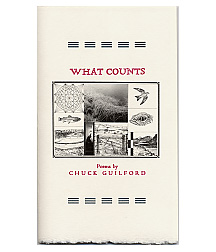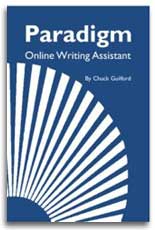Keeping the above purposes of documentation in mind will help you decide whether you need a reference note or not. Consider, also, these more specific guidelines:
1. Use a reference citation to identify the source of all material that has been directly quoted.
Strong writers keep direct quotations to a minimum. Include as few direct quotations from outside sources as possible, and keep them as short as possible. As a general rule, quote directly only when the exact wording of your source is vital to understanding the point under discussion or when your source has said something especially eloquent or memorable. Otherwise, paraphrase the ideas, or in the case of a long passage, summarize the relevant points.
When you use a direct quotation, as when you paraphrase or summarize, introduce it with a running acknowledgment, as in the following example:
This view is clarified by Fritjof Capra, who points out that "once it is seen to be a form of energy, mass is no longer required to be indestructible, but can be transformed into other forms of energy" (187).
Here, the writer considered Capra's exact wording to be crucial, and so decided to quote the passage exactly.
2. Use a reference citation to identify the source of material that has been paraphrased or summarized.
Even when you don't quote directly but change your source's wording and restate the ideas in your own language, you should document your source. You should also document your brief summary of the main points of someone else's longer discussion.
Again, as with direct quotation, introduce summarized or paraphrased material with a running acknowledgment.
Jung believes that one of religion's major functions is to present humanity with a source of allegiance that transcends any individual social or political system. Belief systems that do not reach beyond their immediate sociopolitical contexts, he refers to as mere creeds (29-31).
According to Erich Fromm, it is through the act of giving that we experience our fullest strength and potency (19).
The first example summarizes the relevant points of a two-page discussion in a few sentences. The second rephrases the main idea from a brief passage and blends it smoothly into the writer's own style. Both examples, however, acknowledge the sources of their concepts.
3. Use a reference citation to direct your reader to important background information.
If a full appreciation of the point you're making depends on familiarity with another person's work, use a note to direct your readers to that material. Let them see the intellectual foundation on which your essay is built.
One persuasive argument supporting this view of Satan has been offered by C. S. Lewis (203).
Here, the writer wants readers to know there is authoritative support for the writer's viewpoint. While the writer doesn't have time to go into this support, the note tells readers where to find it.
4. Do not use a reference citation to document information that is common knowledge, even though you found that information in a specific source.
That is, if a piece of information is generally known and acknowledged to be true, you don't need to provide documentation, even though the information is new to you:
When Queen Elizabeth died in 1603, King James VI of Scotland became King James I of England.
You may have uncovered this information in your research, and you may be able to point out the exact source, but why bother? The information is common knowledge to anyone interested in the period and can be found in any good encyclopedia or British history book. There's no need to document it, anymore than there would be to document the fact that George Washington was the first president of the United States.



